The 1979 acquisition of 78.5 acres now known as West Campus was an indication of the significant growth, development, and rich transformation that Texas State University would undergo during the 1980s and ’90s. From record-breaking years of enrollment to substantial construction, the adoption of computers on campus, the start of Texas State Round Rock, and much more, the goal of this era was to link the university’s heritage with its progressive future.

Campus Expands and Enrollment Explodes
As the 1970s transitioned into the ’80s and ’90s, Texas State’s enrollment would set new record-breaking numbers continuously throughout the two decades. With enrollment at 15,400 at the start of 1980, 1983 would see a 10 percent increase from the previous fall’s enrollment, with the student population reaching 18,314. By 1987, Texas State would surpass 20,000 students and never look back.
With this unprecedented growth in the student population, there arose the need for an expansion in campus facilities and infrastructure — and the need was certainly met.
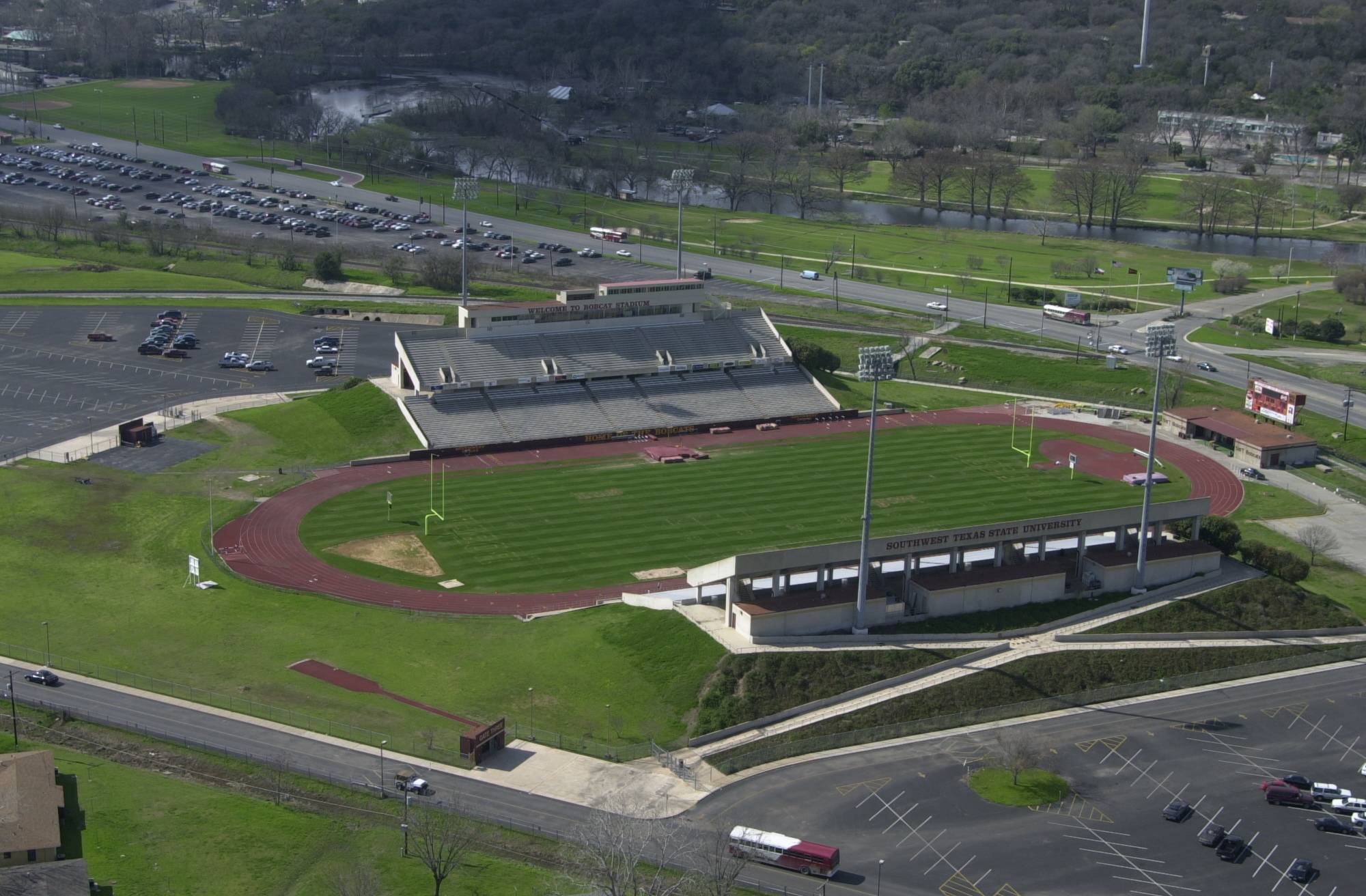
In 1981, Bobcat Stadium would become the home of Texas State football, replacing C.E. Evans Field. The stadium has undergone several renovations over the years to add state-of-the-art amenities and increase its capacity to seat 30,000 spectators.
But Bobcat Stadium was far from the only considerable development of campus facilities. In fact, an estimated 490,536 square feet of the Texas State San Marcos Campus underwent construction between 1984-85, including a $1.3 million renovation of Old Main. An additional 6,600 square feet of usable space was added through the development of a third floor to the historic structure. Additionally, the exterior bricks and trim were restored, the roof was repainted, and the building was made accessible.
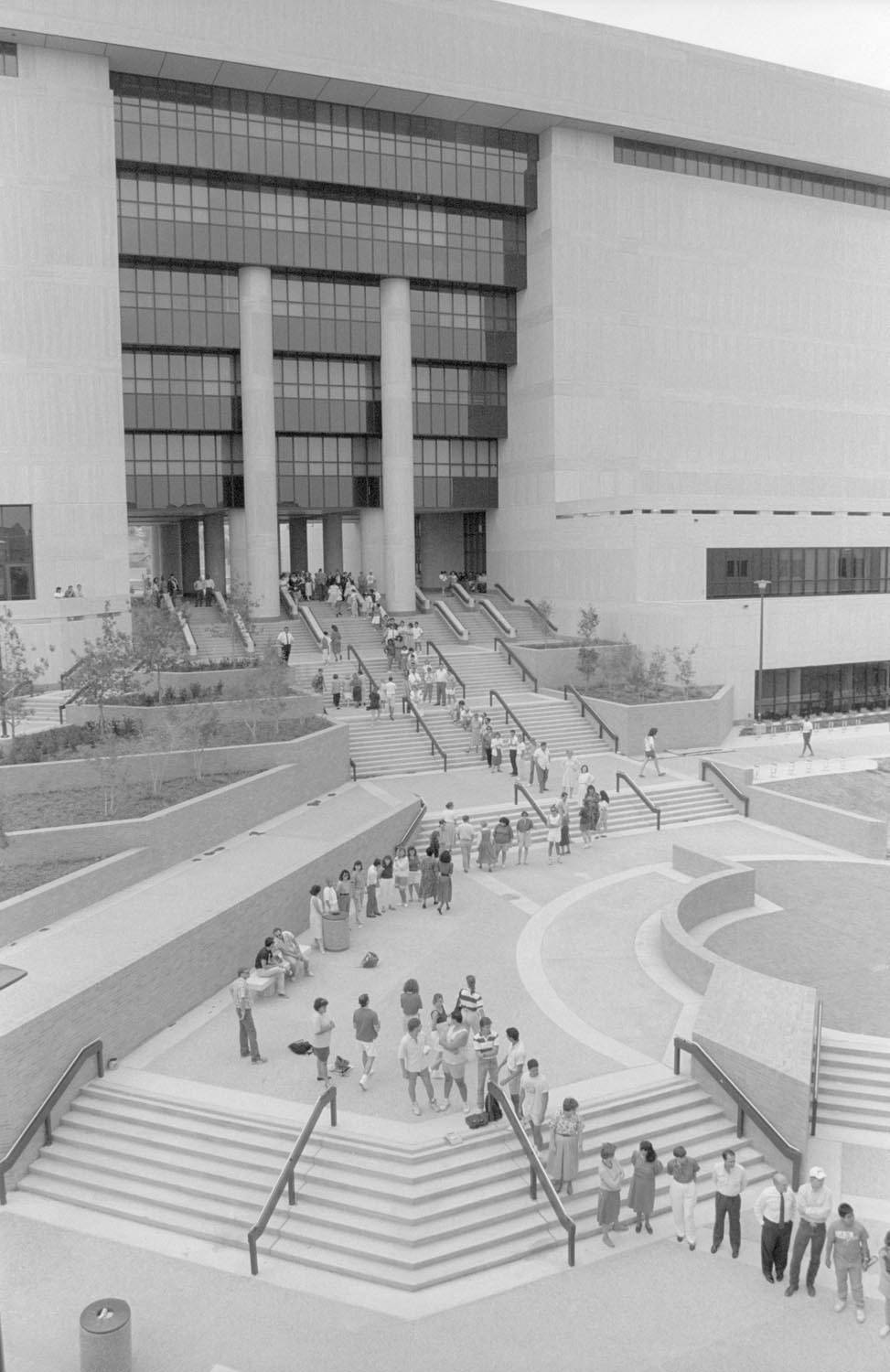
In 1987, a new community emerged when Blanco Hall and Harris Dining Hall were opened on West Campus. The dorms, new at the time, added 300 rooms with private baths to the Texas State campus.
The construction boom continued into the ’90s with the development of Alkek Library, the Health Science Center, and the Student Recreation Center.
Opening in the summer of 1990 with twice the collection and study space available than its previous home in J.C. Kellam, Alkek Library’s expansive seven-story building was named after oilman, rancher, and philanthropist Albert B. Alkek. In celebration of the opening of the massive structure, students, faculty, and staff joined together for the Book-It Brigade, forming a line of participants that stretched from JCK to the steps of Alkek who passed along the first four books to call Alkek their new home: a rare 1555 travelogue, Selections from the Poems of Robert Burns, The Color Purple, and Move!
Alongside research materials, printed texts, and essential resources and technologies, Alkek has also come to serve as a storehouse for United States and Texas government documents and publications.
In 1986, Bill and Sally Wittliff established the Southwestern Writers Collection with a donation of author and folklorist J. Frank Dobie’s papers. What’s now known as The Wittliff Collections has grown to include the Southwestern Writers Collection, the Southwestern and Mexican Photography Collection, the Lonesome Dove Collection, and the Texas Music Collection.
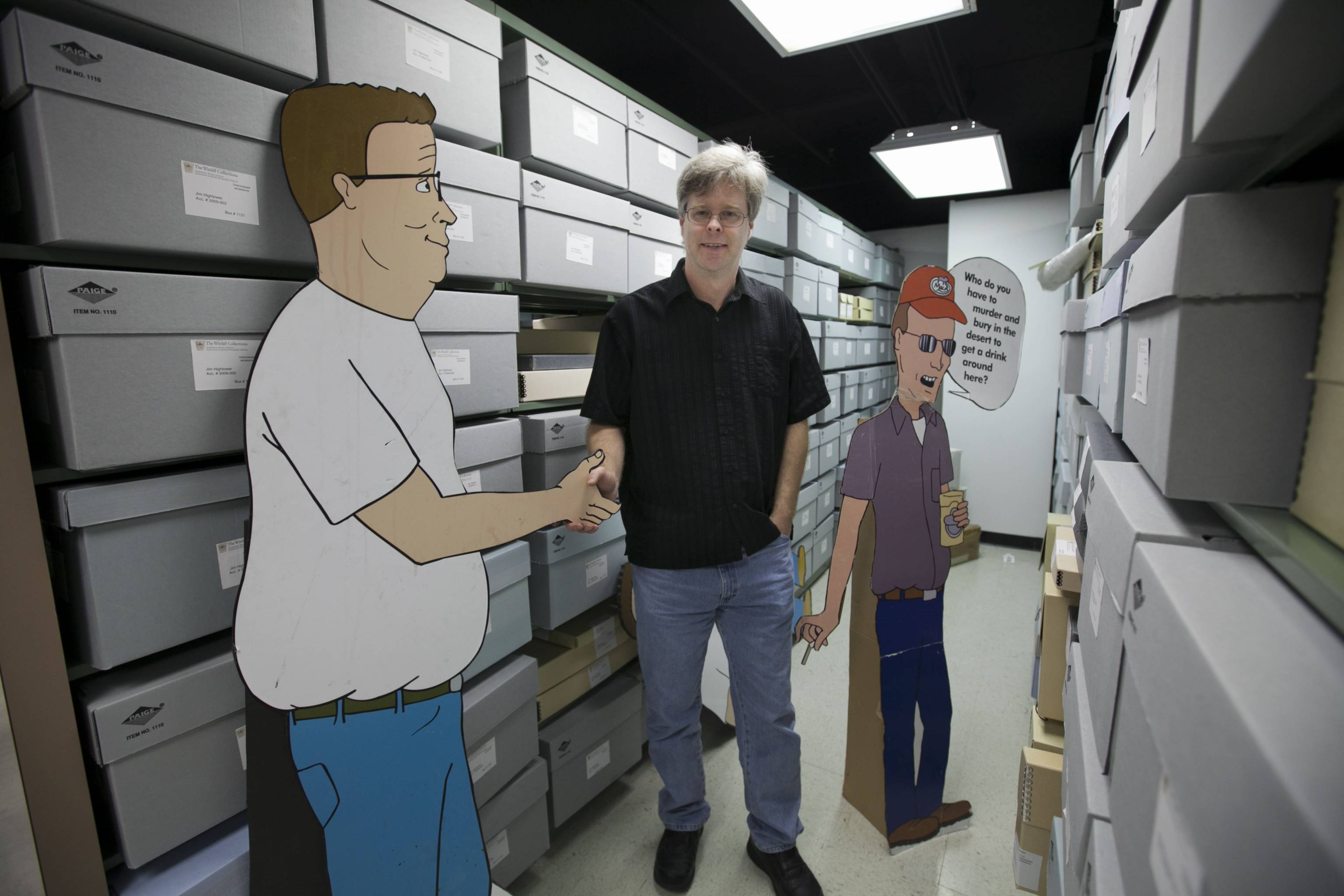
Alkek Library opened in 1990, The Wittliff found a permanent home on the seventh floor. Today, The Wittliff still gathers, preserves, and presents the cultural heritage of Texas, the Southwest, and Mexico through the works of storytellers throughout the region.
Freeman Ranch and Aquarena Springs
Approximately five miles west of San Marcos lies the 3,400-acre Freeman Ranch. Situated on the Edwards Plateau, the ranch consists of rugged hills, karst formations, and a wide diversity of different species.
The ranchland was originally owned by Harold (Harry) M. and Joe Freeman. In 1981, Harold bequeathed 3,485 acres of land to Texas State University to be held in perpetual trust as the Harold M. Freeman Educational Foundation. The land was to be used by the university for farming, ranching, game management, and educational and research purposes.
The university officially took over managing the ranchland in 1985 following the passing of Harold Freeman. Joe Freeman’s portion of the property is managed by other entities and lies adjacent to the university-managed land.

Because of its biogeographical uniqueness and natural resources, as well as its location in one of the fastest growing population centers in the United States, the land on which Freeman Ranch rests is the ideal natural laboratory for the study of sustainable land and water management, as well as conducting research on urban-wildland interface. Freeman Ranch allows for students and faculty to conduct meaningful and externally funded collaborative research across scientific disciplines and institutions.
Another critical addition to the Texas State ecosystem was added in 1994: Aquarena Springs.

Eventually, environmental awareness shifted the public perception of Spring Lake’s unique and endangered species, leading to more stringent environmental restrictions on the area. As a result of scientific discoveries and a greater emphasis placed on conservation, especially in the Central Texas region, the site would eventually be acquired by Texas State University in 1994, transforming Aquarena Springs into the Meadows Center for Water and the Environment, a multidisciplinary center focused on water-related research and education.

Preserving Spring Lake was an essential priority and so consistent efforts have been made to restore the body of water to its pristine state, which has, in turn, further protected seven endangered and threatened species that call the lake and aquifer home, including: the San Marcos fountain darter, Texas blind salamander, San Marcos salamander, and Texas wild rice. Additionally, by actively removing non-native flora and fauna, native species have been afforded the opportunity to thrive.
Home of Spring Lake, which is fed by more than 200 artesian springs, and the starting point of the San Marcos River, Aquarena Springs is believed to be one of the longest continuously inhabited sites in North America with artifacts found in the area dating back 8,000 years.
A.B. Rogers would purchase the property in the 1920s and develop it as a tourist destination featuring the Spring Lake Hotel. In the 1940s, glass-bottom boat tours were introduced so visitors could enjoy spectacular views of the underwater springs. The property would transfer hands to Paul J. Rogers, son of A.B. Rogers, and from the 1950s through the 1980s, Aquarena Springs Resort would become a popular regional theme park that featured an on-site amusement park, hotel, hanging gardens, submarine theater, “mermaid” performers, an underwater clown, and a swimming pig.
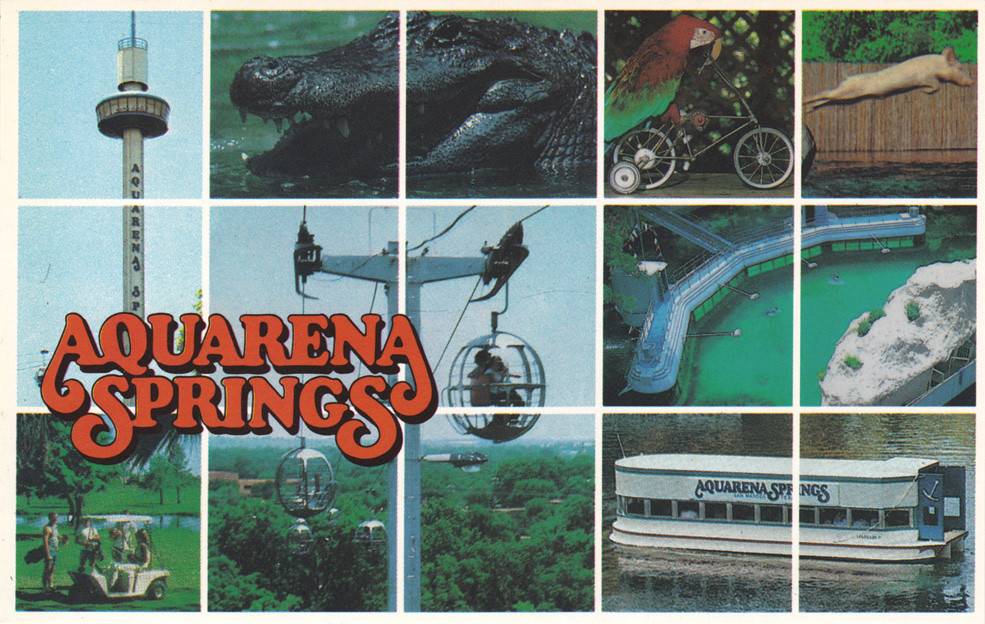
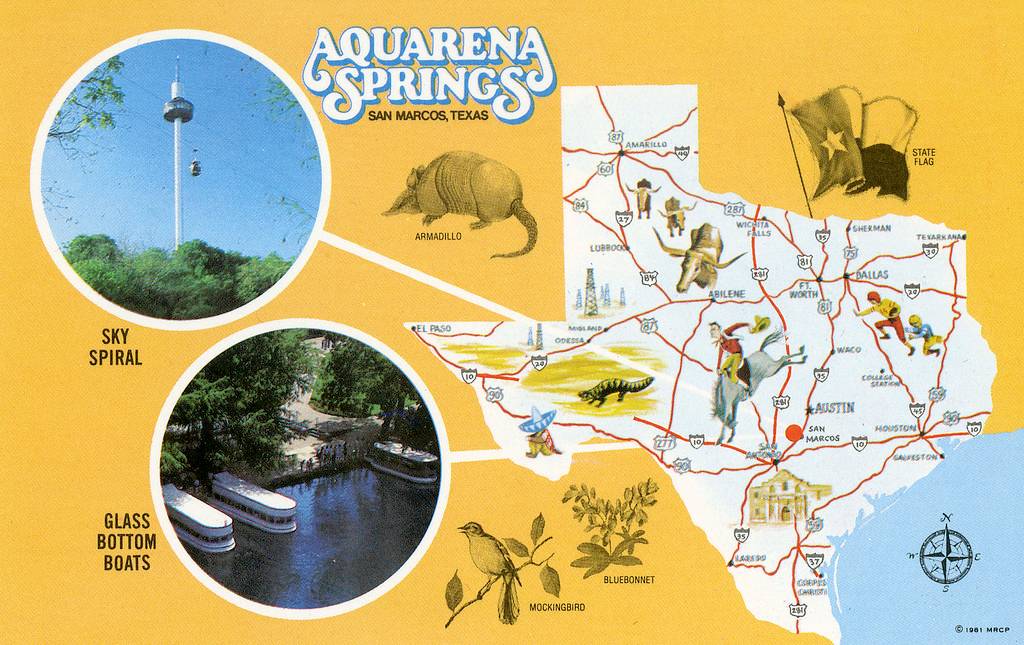
Computers Come to Texas State
While electronic computers first came to Texas State in 1964 to support administrative services and to be utilized by faculty researchers in various departments, they would begin to proliferate throughout the 1980s with the launching of personal computers by IBM in 1981 and Macintosh in 1984.
By 1985, personal computers for student use would arrive at Texas State. Initially, Apple computers were purchased by departments for faculty usage, however, the necessity to get students familiarized with the devices would soon take precedent. Despite their widespread usage nationally, many students were encountering the machines for the very first time while at Texas State – and the results were a mixed bag. While some students were awe-struck with the potential benefits of these then marvels of technology, others were understandably hesitant to adopt these new tools.
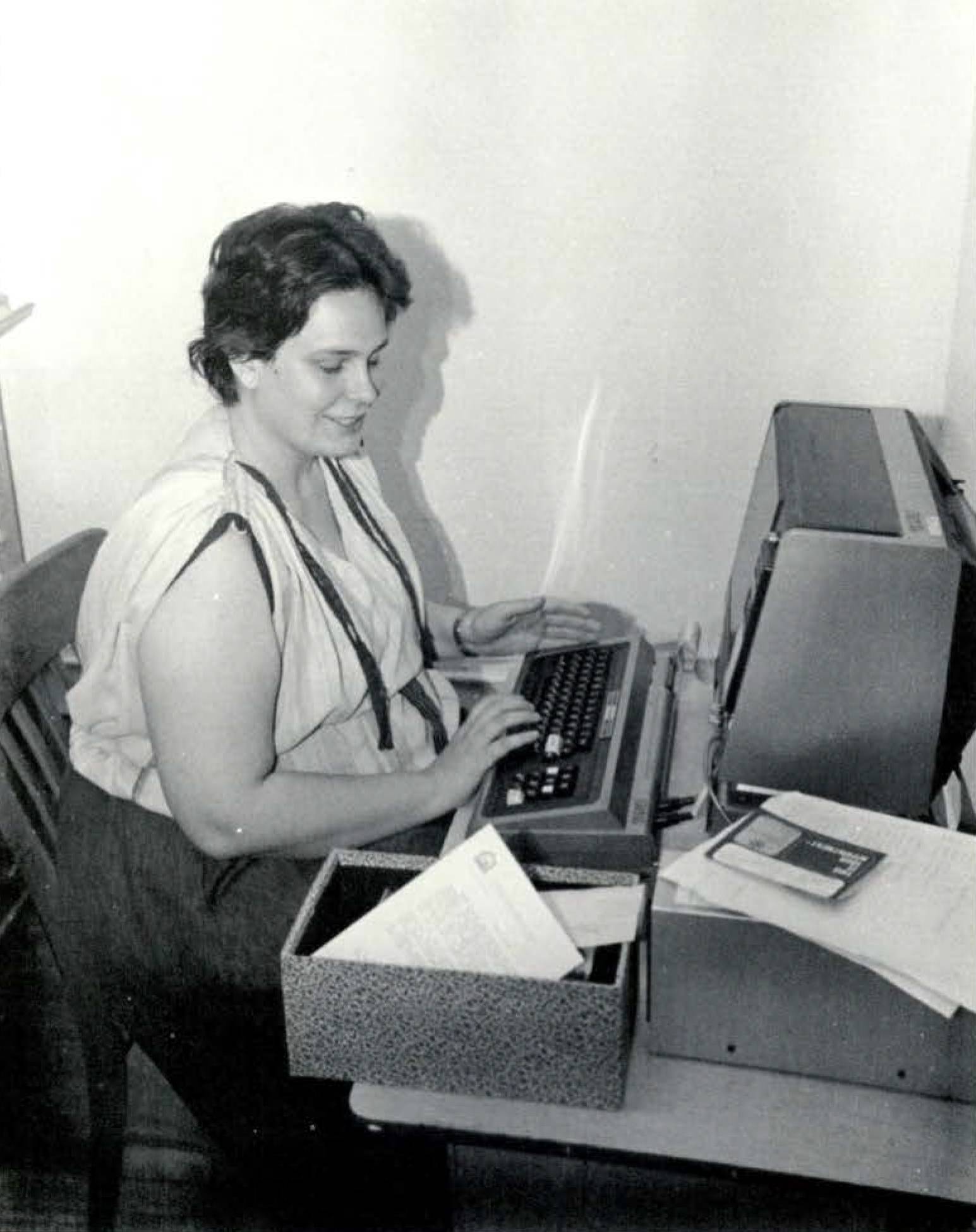
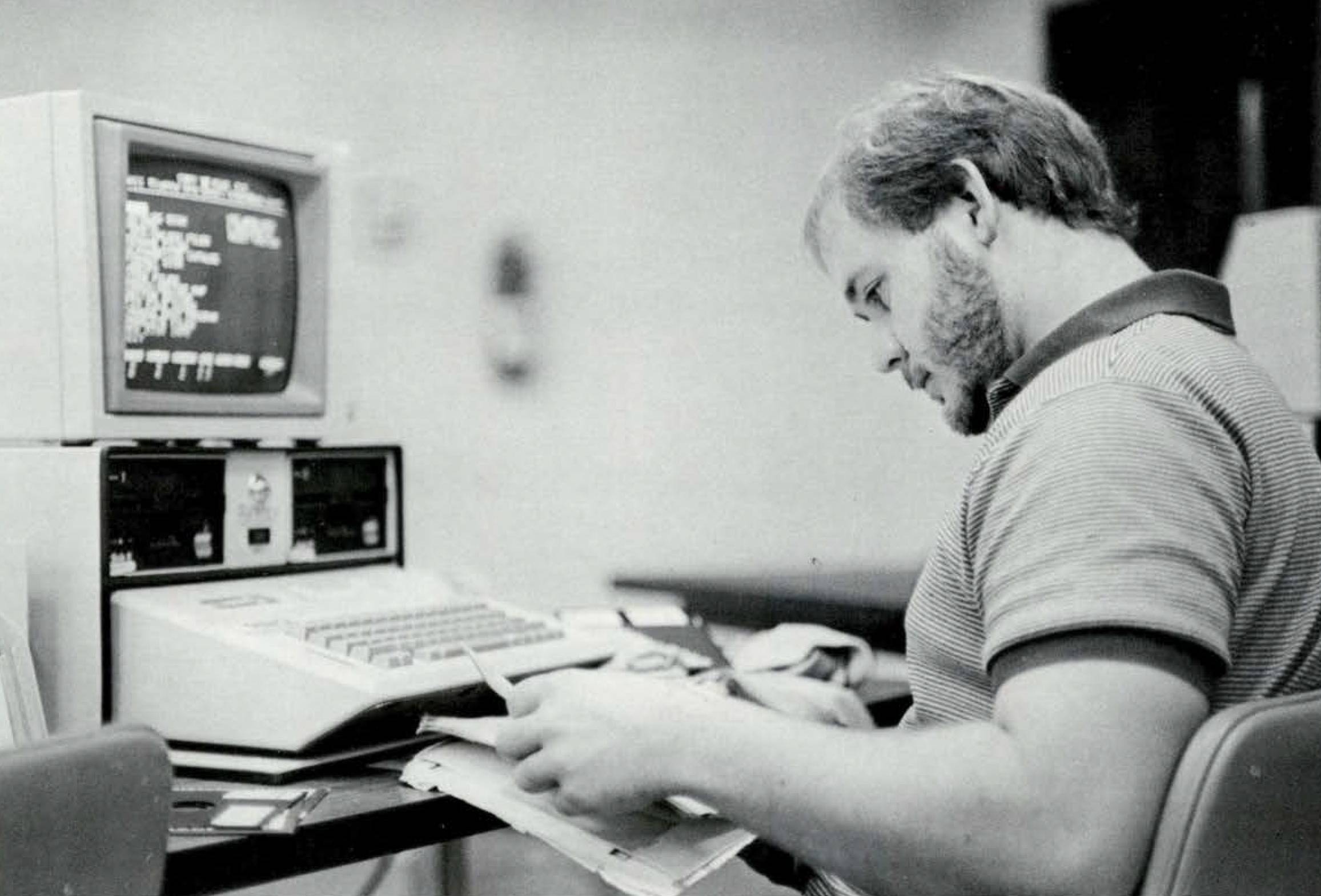
Early software available to students included data base, spreadsheet, dictionary, word processing, and quiz generation programs.
To guide the usage of computers on campus, the Academic Computing Committee was formed that same year. The group focused on where the computers would be housed, organized, who would operate them, and how to enhance computer literacy across campus for not only students but staff and faculty as well.
“Beam me up, Scotty!”
– TXST journalism student learning to use a software program in 1985
Early adopters of computers included the English, history, journalism, and education departments, as well as the Learning Resources Center. In 1986, the office leased a computer system that made writing research papers much easier for Bobcats. Utilizing the InfoTrac system, Texas State students could use the center’s computer to gain access to more than 500,000 magazine, journal, and newspaper references. The resource became an immediate hit with students, whose only issue was having to face lengthy lines to use the system.
“Five to 10 years from now, most students will come into the university being able to use a basic computer in the same sense as you can read and write.”
– John Bardo, dean of the School of Library Arts in 1985
Round Rock Higher Education Center Opens
As the Texas State San Marcos Campus expanded exponentially and off-campus research sites were added, the university’s commitment to better serving the communities of Central Texas became much more evident, and so to better serve the communities of North Austin and the surrounding Williamson County area, the Texas State Round Rock Higher Education Center was established in 1996.
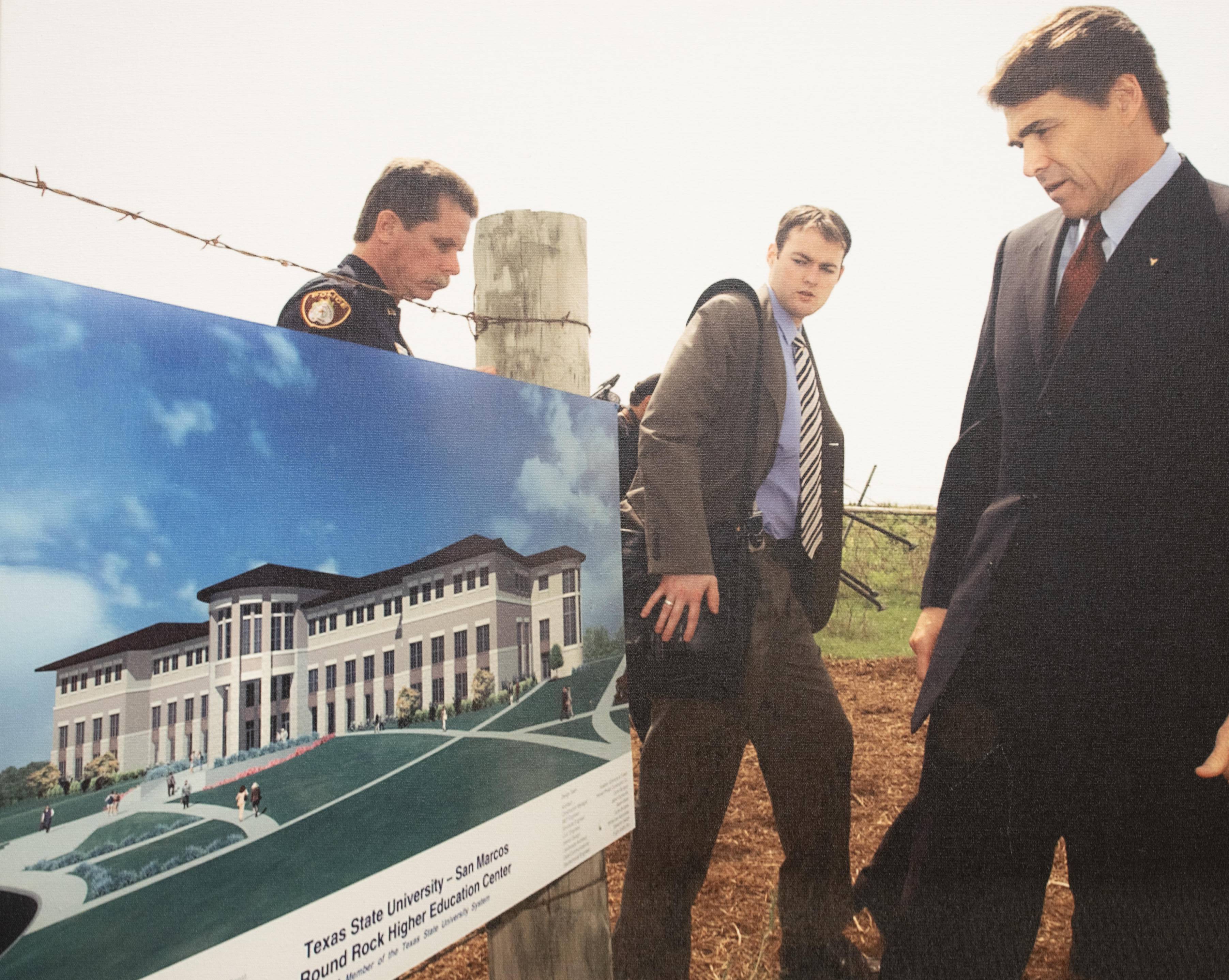
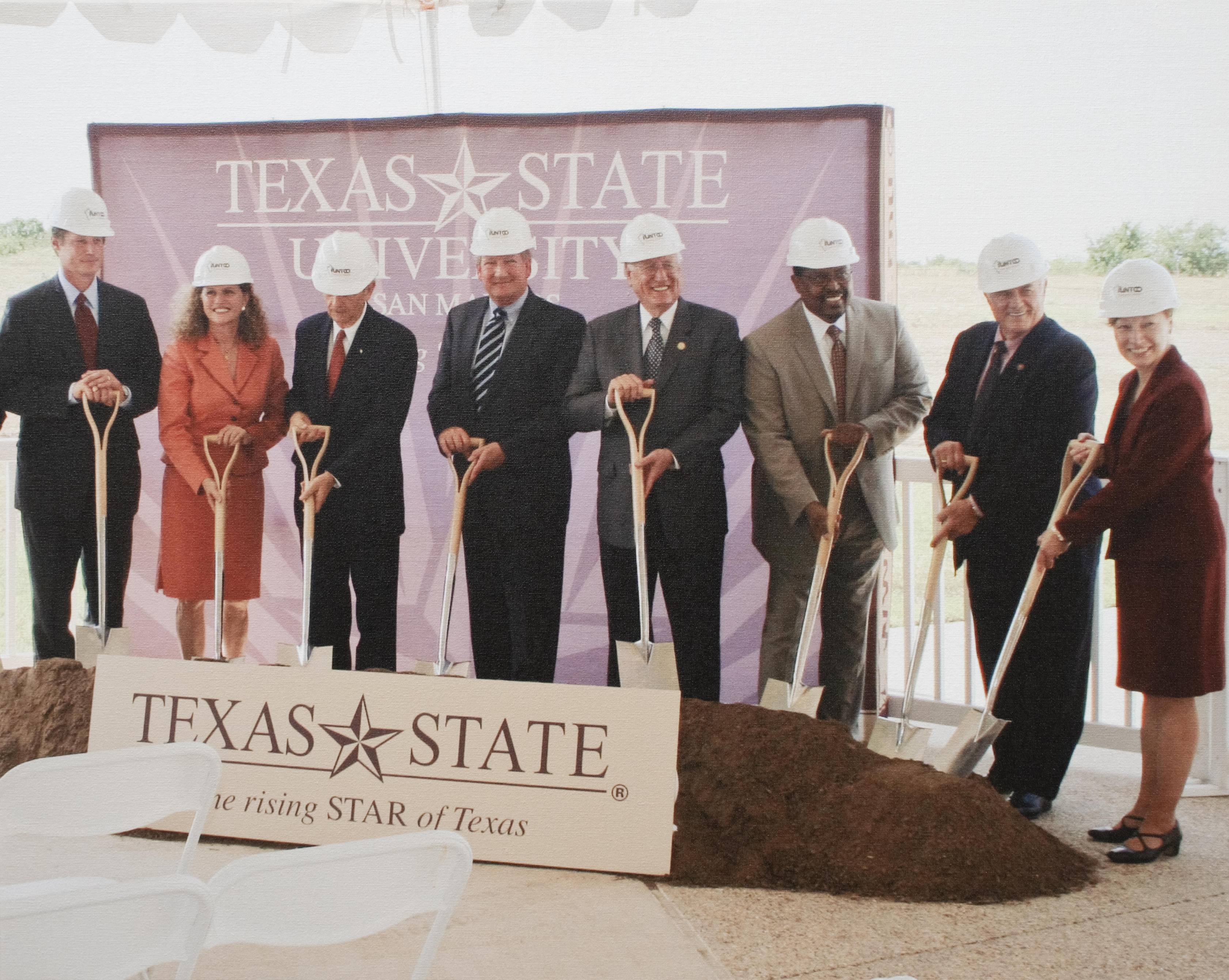
The original site consisted of 15 temporary buildings located on a lot adjacent to Westwood High School in Austin as well as facilities owned by the Round Rock School District. Developed with the intent of providing academic opportunities to nontraditional students, the Round Rock Higher Education Center originally offered night classes for Bobcats interested in earning their graduate degrees in business administration and education. With such a high demand for quality education in the Round Rock area and surrounding communities, the 15 buildings would function at full capacity by the early 2000s.
The Bobcats Who Made TXST
With every new era, Bobcats have broken down walls and created new systems to ensure those that follow had more and better opportunities – and the ’80s and ’90s was no different.
Dr. Elvin Holt would break another barrier when he became the first tenured Black professor in the Department of English, teaching from 1983-2020. During his 37 years of service at Texas State, he would earn multiple teaching awards, three fellowships from the National Endowment for the Humanities, and was named Professor of the Year by the Association of Black Students in 1989.
“I’m trying to make people aware of the rich legacy of the African-American writer. I want people to know that the legacy contains more than the works of the few writers they may have heard of. There is a great deal of education to be done in that regard.”
– Dr. Elvin Holt, May 4, 1989 Press Release
Dr. Holt would also play a pivotal role in the San Marcos community, serving as a member of numerous city committees, such as the Heritage Association of San Marcos, and was an original board member of the Calaboose African American History Museum.
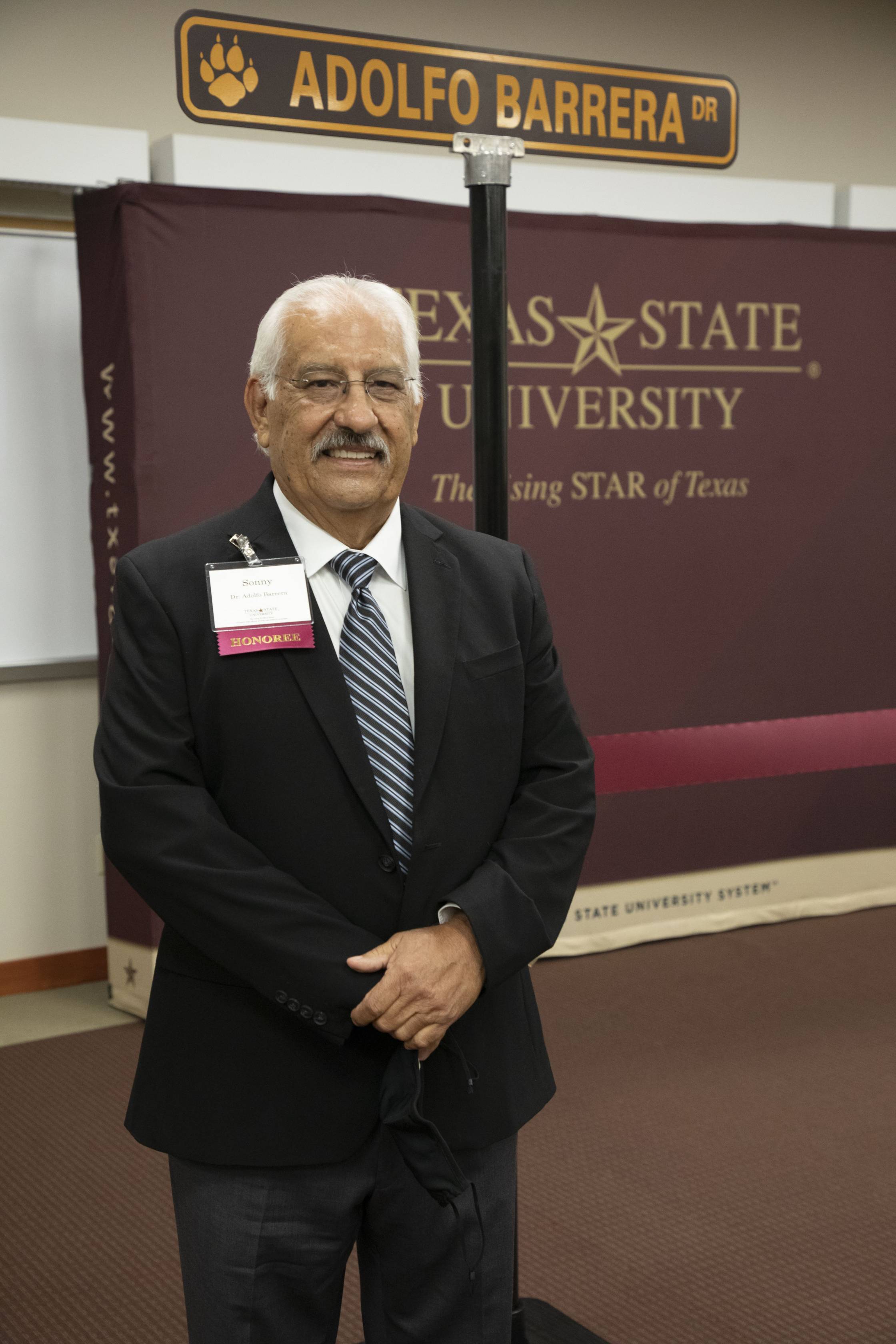
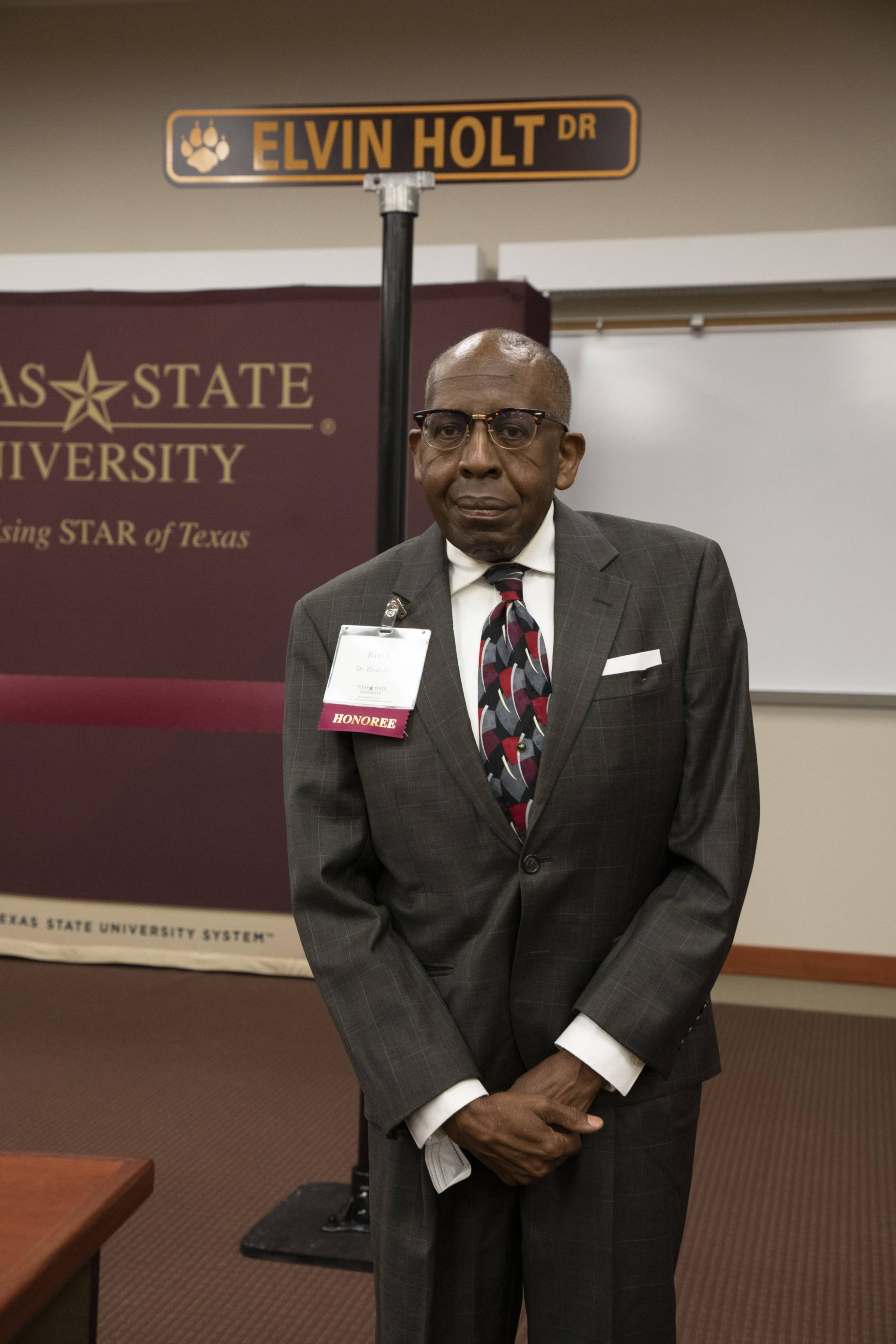
Another leading figure during the ’80s and ’90s was Dr. Adolfo R. “Sonny” Barrera. A counselor, leader, and administrator at Texas State from 1983-2002, he was instrumental in a wide range of multicultural programming that benefitted the university populace. Holding many inaugural positions throughout the duration of his career at Texas State, Dr. Barrera would oversee the recruitment and retention of multicultural students, the expansion of TRIO programs including reestablishing Upward Bound and Student Support Services and establishing the Educational Talent Search and Rural Talent Search, among many other programs and services that tremendously benefitted underrepresented students.
His commitment to supporting and mentoring minority student development programs from recruitment through graduation was pivotal in enhancing the experiences of students of color.
These two leading Texas State figures have been memorialized with streets on the Round Rock Campus carrying their namesake: Adolfo Barrera Drive and Elvin Holt Drive.
A Championship Era in Athletics
The dominant era of Texas State football would arrive when Jim Wacker became the ninth Bobcat football coach in 1979. During his time as head coach from 1979 to 1982, Wacker led the Bobcats to remarkable success, clinching NCAA Division II National Championships in 1981 and 1982, and securing the Lone Star Conference title for three consecutive seasons.

He would leave Texas State with a remarkable 42-8 record, the highest winning percentage in program history.
Under Wacker's guidance in 1980, the Bobcats claimed their first Lone Star Conference championship with an 8-3 overall record, including a 6-1 conference mark. In 1981, they were crowned Division II national champions after a stellar 13-1 season, defeating opponents by a staggering margin and placing 11 players on the All-LSC first team.
Wacker capped off his coaching tenure in 1982 with a perfect 14-0 season and a second consecutive Division II National Championship. His Texas State legacy was further cemented when the Bobcat Stadium football field was renamed Jim Wacker Field in November 2003.
Wacker would serve as Athletic Director at Texas State from 1998 to 2001.
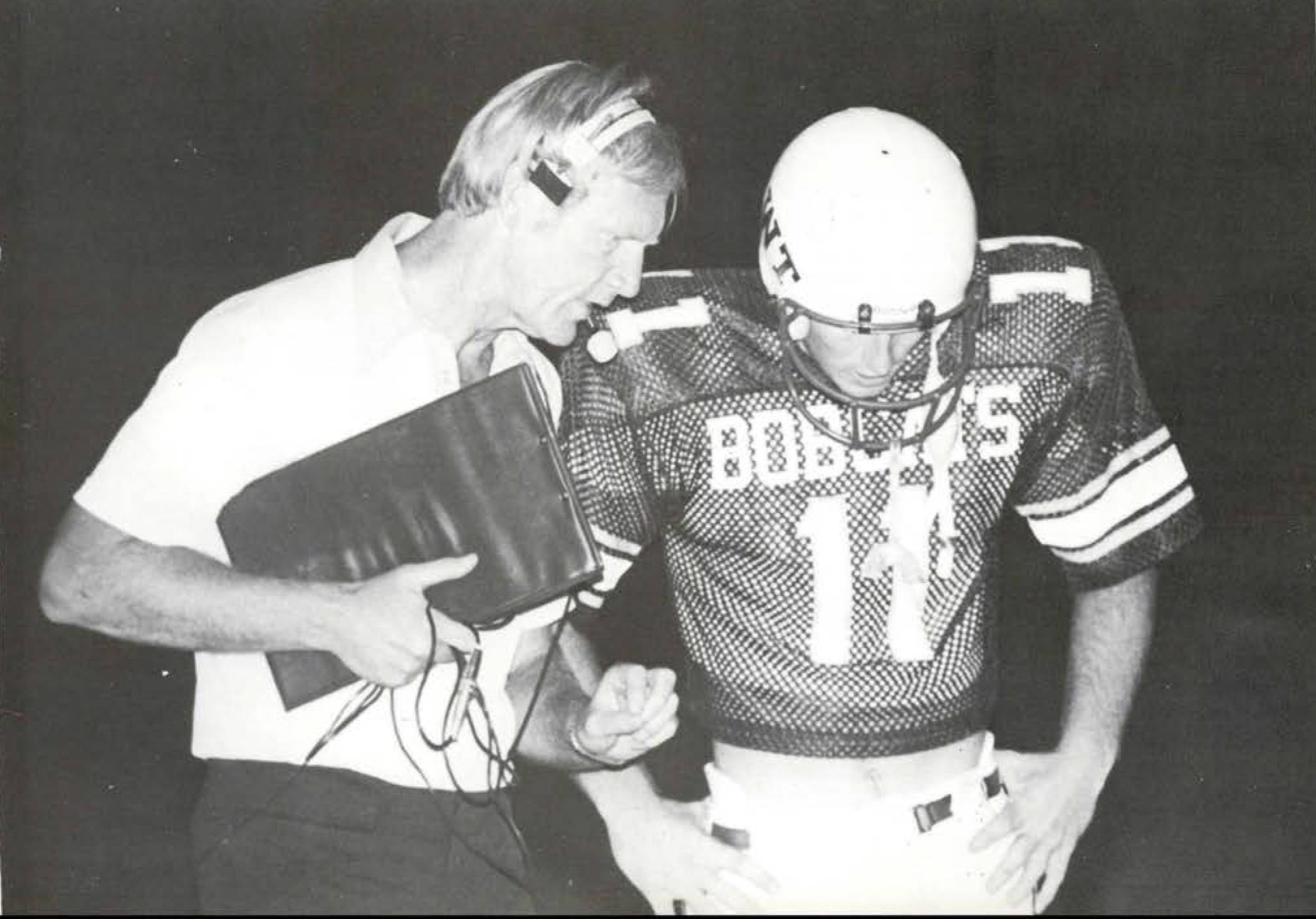
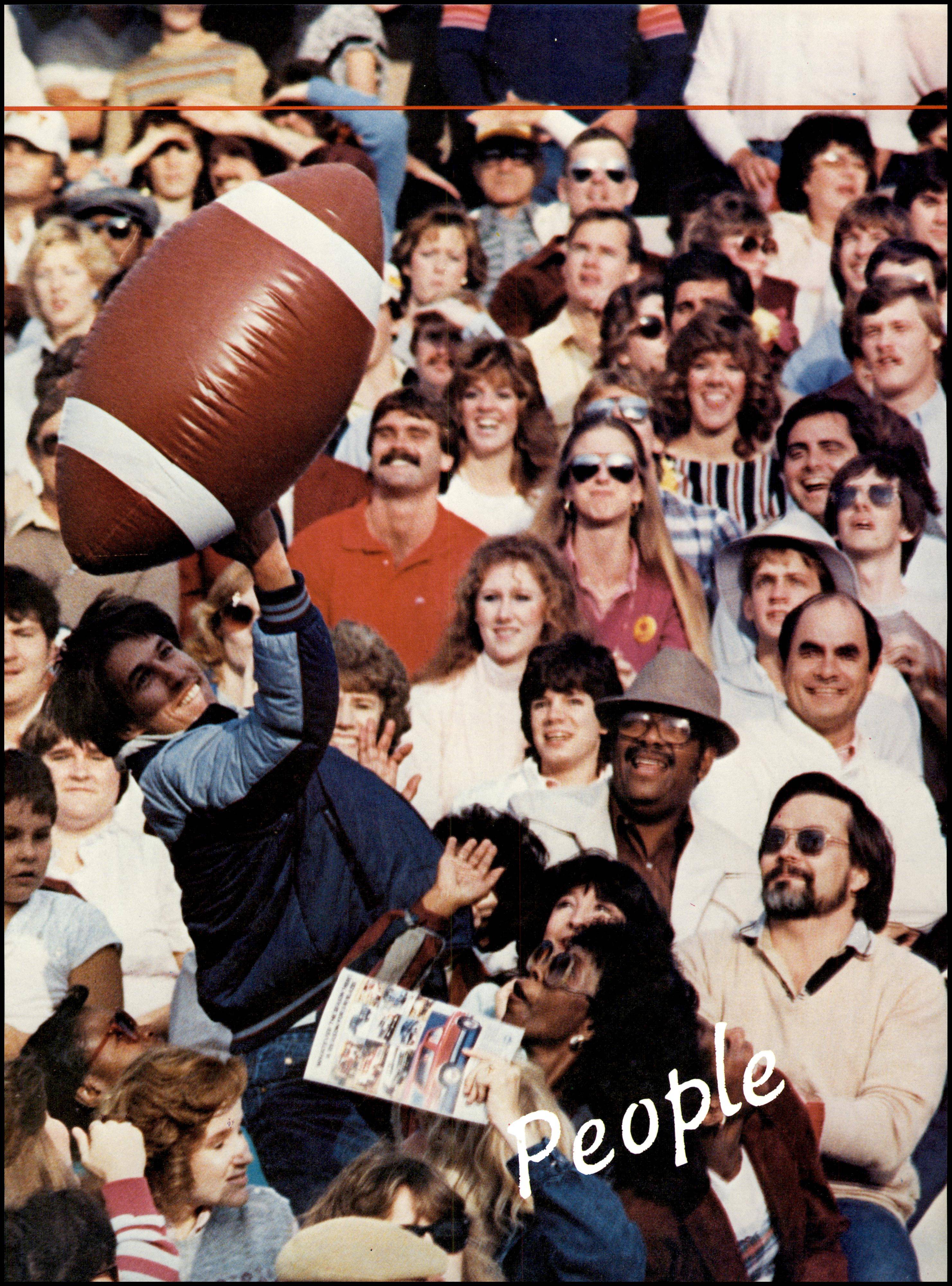
With Texas State football opening up the winning era, Bobcat athletics went on a ferocious tear throughout the ’80s and ’90s, with a wide range of teams winning conference titles throughout the era, including baseball, women’s soccer, men’s basketball, volleyball, men’s track and field, men’s golf, women’s basketball, women’s track and field, and women’s tennis, all collectively becoming champions through the decades and at multiple times.
Alongside these conference wins, Bobcat athletics would go on to win multiple national titles, including:
- Bobcat football wins back-to-back NCAA Division II National Championships in 1981 and 1982
- Men’s tennis wins back-to-back NAIA National Championships in 1981 and 1982
- Men’s golf wins the NCAA Division II National Championship in 1983
Of course, Bobcats aren’t limited to just national trophies. Throughout the ’90s, Texas State saw a number of students and alums make Olympic appearances, such as:
- Charles Austin, who made it to the Olympics in 1992 and won gold in the 1996 high jump competition
- Inez Turner, who successfully competed in the 800-meter relay in 1996
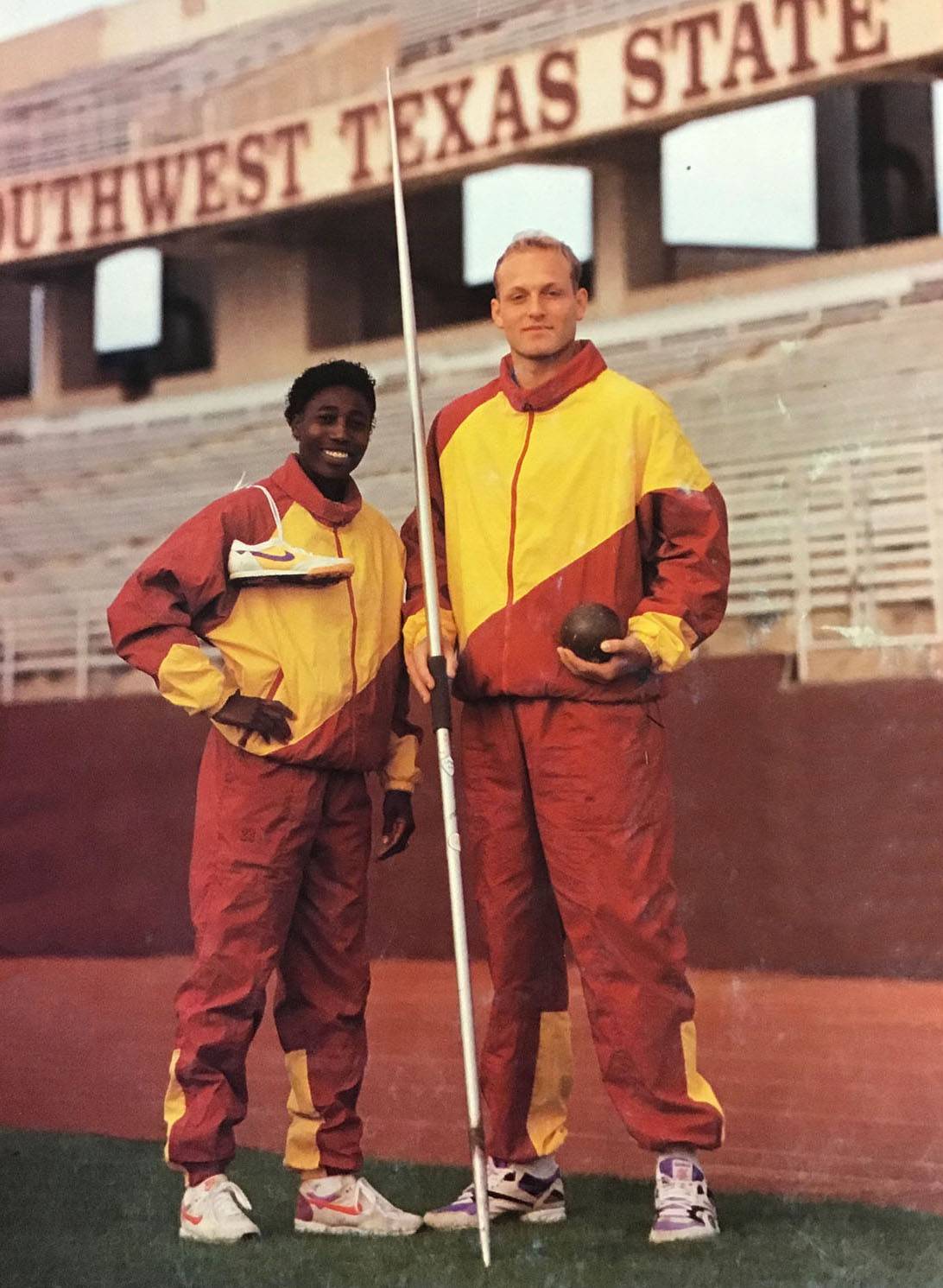
Paving the Road Ahead
1980 to 1999 was a remarkable era for Texas State University that saw exceptional campus growth, academic development, and meaningful cultural shifts that helped to solidify the university’s bonds with the communities it serves. It was the tremendous happenings during these decades that paved the way for the university’s unprecedented growth in the 21st century.
